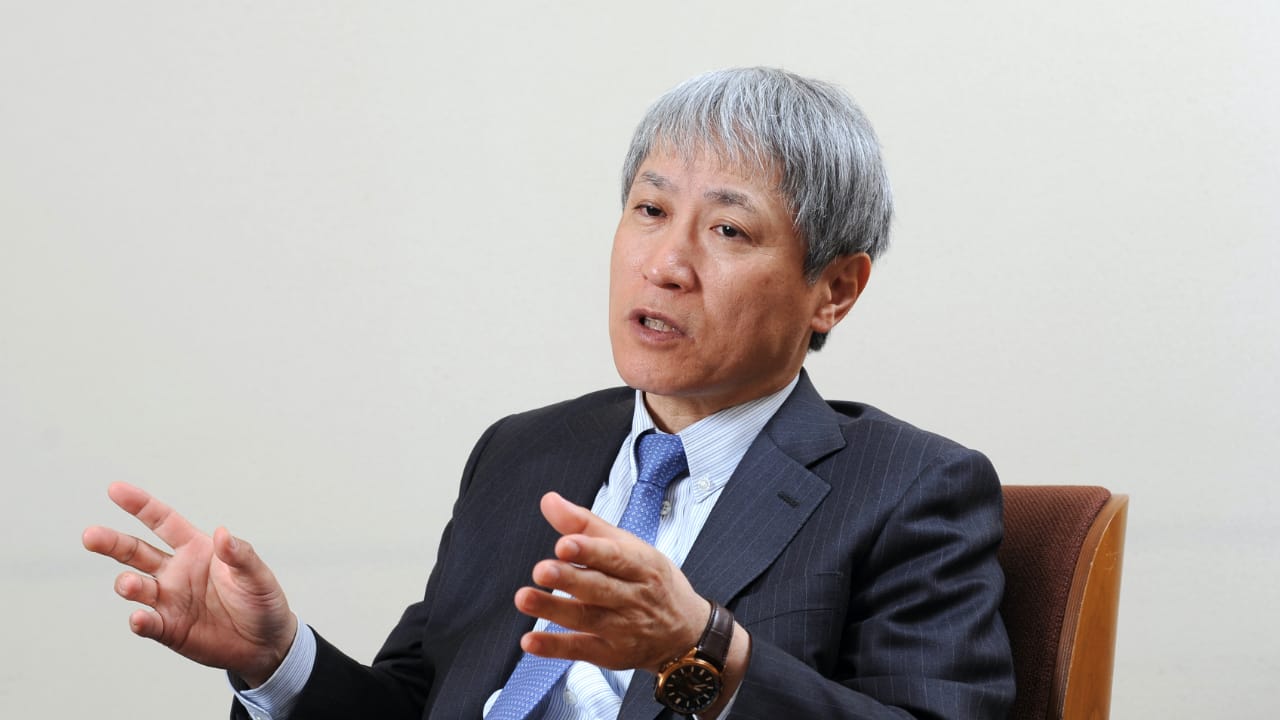
Juntendo University School of Medicine Juntendo Clinic Director
Atsushi Amano
Born in Saitama Prefecture in 1955. Graduated from Nihon University School of Medicine in 1983.
After working at Kameda General Hospital, New Tokyo Hospital, Showa University Northern Yokohama Hospital, etc., he has been a professor of cardiovascular surgery at Juntendo University since July 2002.
He has been in his current position since April 2016.
More than 7,800 surgeries have been performed so far.
In February 2012, a joint team of the University of Tokyo and Juntendo University performed coronary artery bypass grafting for His Majesty the Emperor.
Atsushi Amano, known as the surgeon of His Majesty the Emperor, has been the deputy director of Juntendo University Hospital, Juntendo University Hospital, and is currently involved in many heart surgeries every day while playing the role of director. He spoke frankly about his work style as a top manager, the future direction of hospital management, the ideal way of international medical cooperation, and the problem of declining birthrate and aging population.
Since becoming a professor of cardiovascular surgery at Juntendo University School of Medicine in 2002, I have been busy every day. When the initial clinical trainees at Juntendo University became so-called "away from the university" when they were deputy directors, they improved the quality of the training content and increased the satisfaction of the trainees with the training content, and "full match" in doctor clinical training matching. Achieved. In the near future, I think that the day will come when Juntendo University will be evaluated as a "prestigious training hospital" as a result. After serving as the deputy director for two years, I became the director from April 2016. I wanted to continue heart surgery with the position of director. It is also for proof that you are a surgeon and for training patients and younger generations. Meetings and approval of documents are cleaned up in the morning and evening, and the daytime is devoted to the time spent on surgery.
As the director, in accordance with the policy of President Ogawa, who rebuilt Juntendo University, which had been sluggish for about 20 years, we are making efforts to create a rewarding work environment for employees and to move in the same direction as all employees. increase. We also hope to ensure the safety and security of patients and increase their satisfaction. For medical accidents and cases that may lead to accidents, the monthly medical safety management committee considers prevention of recurrence according to the grade. For serious accidents, we have set up a reporting window that is available 24 hours a day, 365 days a year, and hold a case study committee at any time. Complaints from patients, including waiting time, have decreased considerably. Three years ago, we obtained the JCI (Joint Commission International) qualification as a proof that we meet international standards of medical quality and are continuously and advancedly working to improve patient safety. Taking this certification as an opportunity, we aim to become a leading medical institution in Asia as a base hospital with a wide range of fields from advanced cancer treatment / advanced medical care to disaster prevention. In the past, even though the bed was vacant due to the night emergency, we refused to accept emergency patients because we had a reservation for tomorrow. Is highly evaluated as a medical institution.
Currently, many university hospitals are suffering from deficit management. In Japan, where the birthrate is declining and the population is aging, various policies have been put forward to curb medical expenses. increase. One possible solution is to utilize the spare capacity of university hospitals to accept patients from overseas such as Southeast Asia. Medical care in Japan is highly evaluated from overseas, such as ➀ high medical technology ➁ good quality of medical equipment ➂ good hygiene environment of hospitals. For overseas patients, both medical examinations and treatments are free medical treatment, and the medical treatment fee is about three times that of Japanese people. For example, if 10% of 1000 beds are allocated to overseas patients, the medical income of 300 beds will increase for the hospital.
Previously, I was involved in medical care in Vietnam because I had a VIP heart surgery in Vietnam. Currently, medical care in Vietnam is carried out all the way, but the general diagnosis and treatment techniques are not high, only imitating some advanced technologies in large hospitals, which is close to 40 years ago in Japan. is. Therefore, VIPs and wealthy people go to Singapore, where medical standards are high, to receive the latest treatment. The flight time from Japan to Vietnam is about five and a half hours, but if we increase the speed of the jet to four and a half hours, I think that the convenience will increase the number of patients to Japan. Inbound must also consider the development of transportation infrastructure at the same time.

At the same time, I think we should actively provide medical technical cooperation to Japanese doctors and co-medicals in developing countries in Southeast Asia such as Vietnam. Vietnam wants to complete all medical treatments in Vietnam in the future while establishing a medical system and accumulating medical treatment experience. Medical equipment has been introduced with official development assistance such as Japan's ODA, but there is a shortage of human resources who can handle the number, quality, and equipment. Therefore, Vietnam expects not only physical support but also human support for Japan. In my opinion, for example, in the area of heart disease, there is TAVI (transcatheter aortic valve implantation) as a treatment method for aortic valve stenosis that increases with the increase in the number of elderly people. It is also meaningful to provide it to the underdeveloped countries of medical care in Asia and to broaden the base of medical care by having Japanese doctors provide treatment guidance. The evidence obtained from the many cases accumulated there will be utilized in the treatment of Japanese patients. Therefore, it can be said that "medical export" from Japan to Asia has great potential.

The issue of declining birthrate and aging population is an urgent issue, but measures against the declining birthrate should be addressed with a high level of awareness. As of 2017 (estimated), there are 15.71 million children under the age of 15, accounting for 12.4% of the total population, which is expected to decline for the 43rd consecutive year since 1975. There are two possible ways to solve the declining birthrate. One is to create an environment that makes it easy to have children and increase the number of births. These include the development of childcare facilities, a work environment that allows both childcare and work to be balanced, and the enhancement of systems for raising children while working, such as childcare leave and childcare hours. The other is to visit people who can share education, culture, especially public health culture, to instill and accept Japanese life. It should be treated equally with Japanese people, including insurance and pensions, not just the labor force. On the other hand, medical and long-term care costs are swelling due to the aging of the population, and Japan is in a difficult Financial Position in developed countries. Under such circumstances, there is an urgent need to take measures to extend healthy life expectancy and reduce medical and long-term care costs, and I think that the keys to this are IT (information technology) and AI (artificial intelligence). We hope that we will make the best use of these and lead to drastic reforms in medical care and long-term care.
